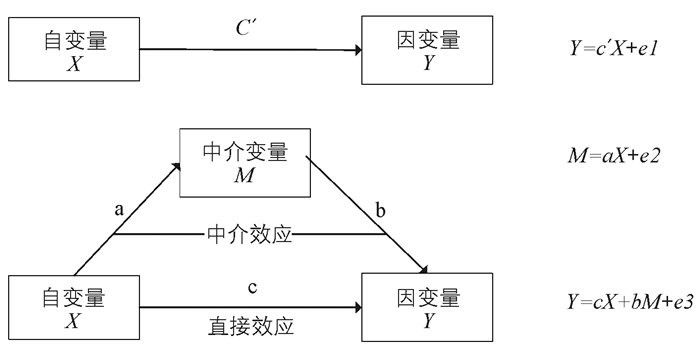全文HTML
-
通过增设物理网点一直是中国银行业进行体量和地域经营范围扩张的主要手段。在经历了快速发展期后,近年来,我国银行业盈利能力大幅下降,不良贷款增速较快; 与此同时,现代科技尤其是信息科技迅速发展,以互联网金融为代表的新兴金融行业对传统银行业的冲击日益加深。在此背景下,银行物理网点何去何从日益成为业界关注的焦点。本文认为,充分理解银行物理网点地理分布对银行信贷行为进而信贷效率的影响,正是破题的关键。
商业银行信贷行为,就是银行基于所掌握的信息,在与企业进行一系列信贷交易活动中为达成某种运营目标所表现出来的行为[1],而信贷行为的有效性直接决定着商业银行的信贷效率。金融地理学认为,金融活动镶嵌于一定的自然和人文地理环境中,金融活动中的信息尤其非标准信息收集、传播和破译受到地理环境的影响和限制,因而地缘因素在金融活动的作用难以被信息科技完全取代[2]。由此,银行物理网点地理分布应该会通过影响银行对企业信息收集及其在银行组织内部传输而对银行的信贷行为进而信贷效率产生影响。然而,银行物理网点地理分布对银行信贷行为的影响及其机理如何,以及这种影响与银行信贷效率的关系,尚待进一步明确。正确认识银行业发展过程中地理环境对银行信贷行为和信贷效率的影响,对于当前中国银行业从调整物理网点分布、推进扁平化管理改革等方面增强我国商业银行生存和竞争能力,具有一定的理论和实践意义。
-
近年来,随着信息与网络科技的发展和银行经营地理范围的扩张,地理环境因素对银行信贷活动的影响日益受到理论界的关注。梳理文献发现,相关研究主要集中于地缘因素在银企信贷活动中的作用以及银行内部层级距离对银行信贷效率的影响两个层面。
关于银企地缘临近作用的研究始于对“地理终结论”的探讨。以O'Brien,DeYoung为代表的学者认为,信息和网络技术的发展解决了地理环境对信息交流的限制,抑制由地理距离因素而导致的信息不对称,进而可以扩展银行与客户之间的地理距离,因此地理距离在金融活动中不再重要[3-4]。而Liberty & Peterson,Knyazeva & Knyazeva认为,信息科技的发展只是扩展了硬信息的使用范围,但硬信息并不能囊括所有有价值的信息,而软信息的收集仍需要交易双方频繁而可靠的面对面接触[5],因此地缘临近可以视为一种信息优势,其可通过影响信贷交易成本对企业信贷成本和可得性产生影响[6]。Rajan & Seru指出,银行业过分依赖现代科技收集硬信息会导致银行与客户之间的地理距离越来越大,以致银行无法通过收集客户的软信息对客户硬信息的有效性进行评估,而这正是导致美国次贷危机的重要原因[7-8]。Filomeni,Bartoli,Agarwal & Hauswald进一步认为,信用评分技术等现代科技其客观性本身就受到地理距离的影响[9],借贷双方地理距离越短,越有利于银行对客户软信息的收集,银行对该客户的信用评分越公正[10],因此信息技术与地缘因素是相互补充而非替代的关系[11]。
随着银行经营地理范围的不断扩展,银行异地经营的物理网点越来越多,银行决策部门与运营部门间的地理距离如何影响银行信贷效率也逐渐受到学界关注。理论方面,Aghion & Tirole,Stein从激励机制的角度认为,由于软信息非标准化的特性,银行层级距离越远,软信息的损失程度越高,被利用率越低,这会降低运营部门收集软信息的激励,从而对信贷决策有效性产生负面影响[12-13]; Alessandrini,Rajan则从信息不对称的角度认为,银行分支机构所在地与总部所在地间的物理距离和文化距离越远,银行内部软信息传输成本越高,从而造成决策部门与异地分支机构之间信息不对称程度越严重,这不仅会降低银行的决策效率和执行效率[14],还会导致运营部门出于自身利益目的滥用职权的现象[8]; Agarwal & Hauswald认为,为解决银行层级间软信息传递的问题,银行总部应给予距其较远的分支机构更多的自主决策权[10]。实证方面,Skrastins & Vig对印度某银行的研究发现,银行层级间距离越远,银行越倾向于在信贷活动中收集和使用标准信息而“排挤”非标准信息,这导致银行运营部门因软信息收集不足而只能将信贷资源配置于少数能够提供高质量标准信息的大企业,从而导致信贷配置范围缩小,信贷规模和信贷质量同时下降[15]; Cotugno & Stefanelliet、Torluccio & Cotugno对意大利银行业的研究表明,银行决策部门与组织部门的地理距离越远,银行信贷违约率越高,且银行规模越小,层级间距离对银行信贷效率的负向影响越明显[16-17]; Presbitero研究发现,由于地理环境造成的层级间委托代理问题,银行总部倾向于限制边远地区分支部门的业务活动,在财务健康程度相同的前提下,地区银行部门与银行总部的地理距离越远,银行与该地区企业签订的贷款合同中限制性条款越多[18]。
通过文献梳理不难发现,地理环境是银企信贷活动的一个重要因素,但这些研究还存在如下局限。一是现有文献主要是关于地理环境对信贷活动影响的描述性解释或验证,缺少从更深层面对地理环境影响信贷资源配置作用机理的揭示。二是现有文献多是考察地理环境对企业或客户信贷可得性、信贷成本等的影响,而对银行本身的影响研究较少; Torluccio、Cotugno等人虽然对地理距离与信贷违约率之间做了计量分析,却没有揭示二者关系的内在机理,其计量模型的构建及回归结果的解释是否合理也有待商榷。本文认为,探究银行业地理因素对经济活动影响,须以正确理解地理环境对银行自身的影响为前提; 而仅考虑地理环境对银行信贷效率的影响,不研究银行对地理环境限制做出的反应,则容易陷入“地理决定论”的定式思维之中。特别是现有文献多以金融体系较为成熟完备的西方发达国家为研究对象,其研究结论对以中国为代表的转型国家是否适用还需进一步检验。
有鉴于此,本文试图借鉴金融地理学和空间经济学相关理论和方法,研究银行物理网点地理分布对银行信贷行为的影响及其机理,在此基础上研究二者关系对银行信贷效率的影响,以期在一定程度上弥补现有研究的不足,同时为转型国家金融体系的适用性寻找相关证据。
-
根据企业行为理论,银行作为一个具有共同目标、协作意愿和信息联系的金融组织,信息的收集及其在组织内部的传递直接影响着银行在组织内外的市场行为[12, 19]。在银企信贷活动中,银行与企业间的信息交流既包括银行运营部门与企业间的信息交流,也包括银行运营部门与银行决策部门间的信息交流。研究又表明,交易成本和风险控制是地理环境影响银企关系的两个基本渠道[20]。为此,本文将银行物理网点的地理分布具化为银行运营部门与企业以及银行决策部门的相对地理位置,从地理环境影响交易成本和风险控制的角度切入构建理论模型,分析银行物理网点地理分布对银行信贷行为的影响。
-
在构建模型之前,为便于分析,做如下假定。
假定1:银行决策部门(总部)位于C地,银行运营部门(物理网点)位于P地。P地所有金融资源由银行支配,银行的存款利率为r。
假定2:企业的净收益率为ω(ω≥0),单次贷款规模为K,净收益率的概率分布函数为F(ω),概率密度函数为f(ω)。企业与银行签订还款合同,当企业净收益率ω≥R时,银行收取贷款利率为R,当企业净收益率ω<R时,银行收取的贷款利率为ω。
假定3:由于银行运营部门与企业间存在信息不对称,银行运营部门须对贷款企业进行贷前信息收集和贷后监督审查,造成单次贷款交易成本为βP,期望为E(βP)。
假定4:银行分支机构在收集贷款申请企业相关信息后,需将相关信息上报总部,由总部决定是否批准企业的贷款申请,进而监督分支机构执行相关决定。在此过程中由于信息传输和委托代理问题所造成的单次贷款交易成本为βc,期望为E(βc)。
根据以上假定,在P地区银行为企业单次贷款的收入函数Π为
单次贷款的总成本函数V为
因此,银行单次贷款的收支平衡方程为
两边同除以单次贷款规模K,经化简得,银行单位贷款的收支平衡方程为
如前所述,本文将银行运营部门的地理分布具化为银行运营部门与申请贷款企业以及银行决策部门的相对地理位置,称其与申请贷款企业之间的地理距离为“运营距离”,其与银行决策部门的地理距离为“功能距离”,如图 1所示[14]。
金融地理学将信息分为标准信息和非标准信息。标准信息又称硬信息,是指其收集内容和解读方式具有统一标准,可以编码和储存的信息,如财务报表和信用记录等。由于硬信息的标准统一性,其收集内容基本不受地理环境限制、传播质量不易因空间距离而衰减。非标准信息又称软信息,是指其收集内容和解读方式没有统一标准的信息,如个人能力、风险偏好等。由于软信息的非标准性,信息的收集背景及其收集者自身都是信息的一部分,其收集内容往往受到地理环境限制,传播质量容易随空间距离或社会文化差异而衰减。研究表明,由于硬信息囊括的信息量有限[6],且其本身的可靠性需要依靠软信息加以判断[10],因而地理环境会通过影响银企之间的软信息交流而影响银行信贷活动的交易成本。
就银行运营部门与企业间的信息交流而言,具有地缘临近优势的银行,可以通过双方长期、多渠道的交流与企业建立稳定可信赖的银企关系,获取企业更多的软信息,从而降低双方的信息不对称程度[2, 6],因此在贷前搜集企业非标准信息方面具有更低的成本,也更容易在贷后监督企业的经营绩效。因此,银行物理网点的运营距离越小,银行对企业的信息搜集和监督引发的交易成本越小,二者成正相关关系。
由此,βP的表达式设定为
式中,vope表示运营距离; t表示企业贷款期限,企业贷款期限越长,未来不确定性越高,银行需要付出更多的信息收集和监督成本; 贷款期限越短,银行在同样时间段内与企业发生交易的次数越多,信息透明程度也越高,因此贷款期限t与交易成本βP成正比; βpf表示由银行分支机构对申请贷款企业信息收集所产生的基本交易成本,其大小只与企业自身的信息透明程度有关,企业信息透明程度越高,βpf越小。
则
就银行运营部门与决策部门的信息交流而言,由于企业信息尤其是软信息主要由运营部门掌握,运营部门所在地与决策部门所在地的空间距离和文化差异越大,信息在传递和解读过程中内容和效率损失也就越大,银行层级间信息不对称问题也就越严重。这不仅会影响银行决策部门的决策效率[16],还会导致银行层级间的利益目标冲突,这些无疑都会抬升银行在信贷活动中的交易成本。因此,银行物理网点的功能距离越大,银行对企业的信息搜集和监督成本越大,二者成正相关关系。
由此,βc的表达式设定为
式中,vfun表示银行运营部门与其决策部门间的地理距离; 由于银行决策部门无法直接获取企业软信息,因此运营部门上报的申请贷款规模越大,决策部门对待贷款申请越慎重,因而单次贷款规模K与交易成本βc正相关; βcf表示银行决策部门与运营部门信息交流所产生的基本成本,其大小只与银行内部控制水平有关,银行内控水平越高,βcf越小。则
因此,公式(4)改写为
-
假定每家企业面临不同的贷款规模需求,则由公式(9)得
其中,K*为其他条件给定时,银行保持收支平衡所要求的单次贷款规模,即对于单次贷款规模低于K*的企业,银行将不能为其提供贷款。
由于K*>0,结合公式(10),有
$R-\int_{\omega^{-}}^{R} F(\omega) \mathrm{d} \omega-\left(r+v_{\mathrm{fun}} \times E\left(\beta_{c}^{f}\right)\right)>0$ ,因此即物理网点运营距离vope、功能距离vfun与银行单次贷款最低规模要求K*正相关。说明,银行物理网点地理分布会影响银行信贷流向:面对地理环境所造成的交易成本上升,银行倾向于将信贷资源向单次贷款规模较大的企业投放,以求获得规模经济效益进而降低交易成本,由此造成银行信贷集中度随之上升。基于以上分析,本文提出假说1。
假说1:银行物理网点地理分布会影响银行信贷流向,物理网点运营距离和功能距离越远,银行信贷集中度越高。
-
假定每家企业面临不同的贷款期限,则由公式(9)得
由于t>0,结合公式(13),有
$\left[R-\int_{\omega^{-}}^{R} F(\omega) \mathrm{d} \omega-\left(r+v_{\text {fun }} \times E\left(\beta_{c}^{f}\right)\right)\right] \times K_{i}>0$ ,因此有同时有
即物理网点运营距离vope、功能距离vfun与企业贷款期限t负相关。说明,银行物理网点地理分布会影响银行信贷流向:面对地理环境造成的信息不对称,银行倾向于缩短企业贷款期限,以求降低由信息不对称造成的信贷风险,由此造成银行中长期贷款比例随之降低。基于以上分析,本文提出假说2。
假说2:银行物理网点地理分布会影响银行信贷期限结构,物理网点运营距离和功能距离越远,银行中长期贷款比例越低。
同时,已有研究表明,地理环境因素会影响银行信贷效率[8]。结合上文对银行物理网点地理分布会与银行信贷行为关系的分析,同时考虑到银行信贷行为对信贷效率的作用,本文认为,银行物理网点地理分布会通过影响银行信贷行为而对银行信贷效率产生影响。具体而言,在一定的物理网点地理分布下,面对地理环境对信息收集和传输的限制,银行不会“坐以待毙”,而是通过提高信贷集中度,降低中长期贷款比例方式调整信贷行为,以期降低单位贷款交易成本和信贷违约风险,进而提高信贷效率。由此,本文提出假说3。
假说3:银行物理网点地理分布会通过影响银行信贷行为进而影响银行信贷效率,物理网点运营距离和功能距离越大,银行越倾向于提高信贷集中度,降低中长期贷款比例,以提高信贷效率。
一. 理论模型构建
二. 理论模型分析与假说提出
1. 银行信贷流向分析
2. 银行信贷期限结构分析
-
为验证上述假说,本文建立如下计量模型,运用2012-2019年我国银行业面板数据对其进行检验。
-
模型1:信贷流向模型
模型2:期限结构模型
模型1主要验证假说1,即银行物理网点地理分布对信贷流向的影响; 模型2主要验证假说2,即银行物理网点地理分布对信贷期限结构的影响。上式中,i银行t时期的信贷流向指标Dirit、信贷期限结构指标Matit被解释为银行运营距离指标Opeit及银行功能距离指标Funit以及一组控制变量Xit的函数。Dirit以各银行最大十家贷款单位的贷款比例(即贷款集中度)表示; Matit以各银行中长期贷款占总贷款比例表示。根据已有研究[20-23],Xit包括银行股权性质、银行规模和银行所处金融环境。
Opeit以该银行在各省人均分支机构数加权和的倒数表示,权重为该银行在某省分支机构数占其全部分支机构数的比例,其计算公式如下:
式中,Branitb表示i银行t时期在b省的分支机构数量,Poptb表示t时期b省的城镇人口数(万人)①; Opeit越大,i银行t时期物理网点的运营距离越大。
① 由于本文主要考察对象为商业银行,而商业银行主要分布于城镇,因此此处选择城镇人口。
Funit以该银行在各省的分支机构距其总部空间距离自然对数①的加权和表示,权重为该银行在某省分支机构数占其全部分支机构数的比例,其计算公式如下:
① 出于控制回归系数数量级的需要。
式中,Djbi表示i银行在b省的分支机构与其位于j省总部的空间距离,用b省和j省行政中心(省会)距离表示②,其余指标与式(18)同。Funit越大,i银行t时期物理网点的功能距离越大。
② 各省市行政中心距离利用Jenness arcview gis扩展插件[32]计算而得。
被解释变量、解释变量及控制变量具体含义见表 1。
-
本文数据来自国家统计局网站、中国银监会、各地市银监局网站、各省市金融年鉴、Wind数据库、中经网数据库以及各银行年报等。其中,计算银行物理网点运营距离Ope、功能距离Fun所使用到的五大国有银行、十二家股份制银行2012-2019年在各省市分支结构(营业网点)数据,为作者依据中国银监会《机构持有证列表》《机构退出列表》,各省市银监局网站和金融年鉴手动整理得出; 银行金融环境指标以樊纲、王小鲁《中国分省市场化指数报告》[23]中的“市场化总指数评分”指标表示。各变量描述性统计见表 2。
-
从表 2看出,因变量及各主要解释变量均有较大的标准差,因此本文采用加入个体效应项的面板数据回归模型进行实证能够充分体现不同地区的异质特征。在个体效应选择方面,由于本文样本囊括了所有五大国有银行和十二家股份制商业银行,即在样本选择上并非随机选取,因此回归过程中预先设定固定效应[23],进而利用F检验和Hausman检验对其有效性进行检验。检验结果表明,两个模型中F检验和Hausman检验都说明选择固定效应回归模型对于本文所研究问题更为恰当。模型1和模型2的回归结果见表 3和表 4。
可见,表 3中信贷流向指标Dir对运营距离指标Ope和功能距离指标Fun的回归系数显著为正,表明银行物理网点地理分布会影响银行信贷流向,即在其他条件一定的情况下,物理网点运营距离和功能距离越大,银行信贷集中度越高。由此,假说1通过了验证。
表 4中信贷期限结构指标Mat对运营距离指标Ope和功能距离指标Fun的回归系数显著为负,表明银行物理网点地理分布会影响银行信贷期限结构,即在其他条件一定的情况下,银行运营距离和功能距离会影响越大,银行中长期贷款比例越低。由此,假说2通过了验证。
实际上,物理网点地理分布对银行信贷行为的影响很好地解释了样本统计期内十二家股份制银行的快速扩张并未有效解决中小企业贷款难的难题。聚焦于实际看,在样本统计期内,虽然十二家股份制商业银行经历了快速发展,异地经营的物理网点逐渐增多,但相比于五大国有银行,股份制银行在新进入地区单家物理网点的地域覆盖范围依然较大、物理网点与企业之间的距离依然较远,而且快速扩张也必然导致物理网点与其总部之间的地理距离上升。由于物理网点地理分布会影响银行行为,物理网点的运营距离和功能距离越大,银行对企业的最低单次贷款规模要求越高,中长期贷款比例也随之下降,中小企业难以从股份制银行的快速扩张中得到相应支持也就不难理解。
就控制变量而言,信贷集中度指标Dir对国有股权比例指标Gyg的回归系数显著为正,对金融市场环境指标Mar的回归系数显著为负,说明国有股权比例越高,金融市场环境越差,银行贷款集中度越高; 信贷期限结构指标Mat对国有股权比例指标Gyg和金融市场环境指标Mar的回归系数显著为正,即国有股比例越高,金融市场环境越好,银行中长期贷款比重越高。而无论Dir还是Mat对银行规模指标Cap的回归系数都不显著,本文认为,这一方面是因为本文选取的样本数据来自五大国有银行和十二家股份制银行,虽然各银行资产规模有一定差异,但相较于城商行等其他类型银行,从资产层面上十二家股份制银行和五大行同属于大型商业银行,因而没有体现出对银行信贷行为的显著影响。
一. 模型构建与变量设计
二. 数据来源、描述性统计
三. 计量模型回归结果与分析
-
为验证假说3,本文引入中介效应模型进行分析。所谓中介效应,即除直接影响外,自变量还可以通过影响第三方变量对因变量产生间接影响,其中第三方变量称为中介变量,如图 2所示。根据中介效应检验程序,如果自变量X对中介变量M的回归系数a显著,且中介变量M对因变量Y的回归系数b显著,则中介效应存在; 如果a、b仅有一个显著,则利用bootstrap法检验二者的联合显著性。在中介效应存在的情况下,如果a×b×c>0,则中介变量体现出互补性中介效应,即中介变量加剧了自变量对因变量的影响; 如果a×b×c<0,则中介变量体现出竞争性中介效应,即中介变量削弱了自变量对因变量的影响[22]。
为此,本文首先建立检验银行物理网点地理分布与银行信贷效率基本关系的模型3。
模型3:银行效率模型
模型3中,Eff表示银行信贷效率,用各银行不良贷款率表示,不良贷款率越高,银行信贷效率越低; 其他指标意义与模型1和模型2相同。
-
模型3的回归结果如表 5所示。
模型3的回归结果表明,不良贷款率指标Eff对银行物理网点地理分布指标Ope和Fun的回归结果显著为正,即在其他条件一定的情况下,银行物理网点地理分布确实会对银行信贷效率产生负向影响,银行的运营距离和功能距离越大,信贷违约率越高,银行信贷效率越低,这与Cotugno & Stefanelliet[16]对意大利银行业的研究结论一致。进而建立反映银行信贷行为中介效应的模型4如下。
模型4:中介效应模型
模型4的回归结果如表 6。
表 6中,信贷违约率指标Eff对银行物理网点地理分布指标Ope和Fun的回归系数均显著为正,说明银行物理网点运营距离和功能距离对信贷违约率有正的直接效应。表 7中Eff对信贷集中度指标Dir的回归系数显著为正,结合表 3中Dir对Ope和Fun的回归系数显著为正的结果,可判定Dir对Eff与Ope、Fun的关系具有显著的互补性中介效应,即银行物理网点运营距离和功能距离对信贷集中度的正向影响加强了其对信贷违约率的正向影响,导致信贷效率进一步降低; 而Eff对信贷期限结构指标Mat显著为正,表 4中Mat对Ope和Fun的回归系数显著为负,表明Mat对Eff与Ope、Fun的关系具有显著的竞争性中介效应,即银行物理网点运营距离和功能距离对中长期贷款比例的负向影响会削弱其对信贷违约率的正向影响,从而导致信贷效率上升,与假说3预期一致。
一. 模型构建
二. 模型回归结果分析
-
从金融地理学的角度,本文对我国银行物理网点地理分布与银行信贷行为的关系进行了理论与实证分析,在此基础上利用中介效应模型分析了二者关系对银行信贷效率的影响,得到如下结论:
(1) 一家银行物理网点地理分布会对银行信贷行为存在影响,物理网点的运营距离和功能距离越大,该银行信贷集中度越高,中长期贷款比例越低。
(2) 银行物理网点地理分布对银行信贷行为存在影响的机理在于,由于地理环境对信息搜集和传输的限制,物理网点运营距离和功能距离越大,银企双方信息不对称程度越高,由此引致的信贷交易成本和风险水平越高,因而银行希望通过提高单次贷款规模的方式降低单位贷款的信息收集和监督成本,或通过降低中长期贷款比例的方式控制信贷风险。
(3) 物理网点地理分布与信贷效率之间存在通过银行信贷行为的中介效应,但不同的信贷行为对信贷效率影响的方向不同。具体来看,银行提高信贷集中度会加剧地理距离对信贷效率的负向影响,而降低中长期贷款占比则可降低地理距离对信贷效率的负向影响。
基于以上结论,本文认为,面对银行业盈利能力下降的现状和互联网金融的冲击,同时也为更好地服务于实体经济,我国银行业不应简单地对物理网点进行合并裁撤,而应充分认识到地理环境在金融活动中的作用,从降低信息摩擦的角度优化银行物理网点地理分布,推进物理网点转型,优化银行信贷行为,提高银行信贷效率。为此,本文提出以下建议:
第一,优化银行物理网点地理分布。应考虑到地理环境对银行信贷行为的限制和信贷效率的影响,从客户服务和银行发展的需求出发,通过科学的调研分析和量化评估,对物理网点的位置、数量、产品、服务方式等进行个性化设计,以降低地理环境对信贷行为的限制,为特定消费群体提供专业而差异化的服务,进而提高银行信贷效率。
第二,加强对银行基层网点收集软信息的正向激励。在当今通讯科技迅速发展、硬信息广泛使用的背景下,应充分认识到软信息在金融活动中的重要性,重视和鼓励银行基层网点与当地企业建立稳定可信赖的沟通机制,充分发挥物理网点在银企关系中纽带作用,积极收集企业软信息,软硬信息配合使用,尽可能降低银企双方信息不对称程度。
第三,积极推进银行的信息化建设和扁平化管理改革。要保证银行内部管理水平与不断增大的银行体量、经营地域范围相匹配。一方面,利用互联网和大数据等技术手段减轻地理环境对信息传递的限制,降低银行内部层级间信息摩擦和沟通成本; 另一方面,应打破组织刚性,提高组织灵活性,推进银行扁平化管理改革,优化结构体系,提升决策部门与运营部门尤其异地运营部门信息传输效率,减少因地缘因素而导致的层级间利益目标分歧。




 下载:
下载:
